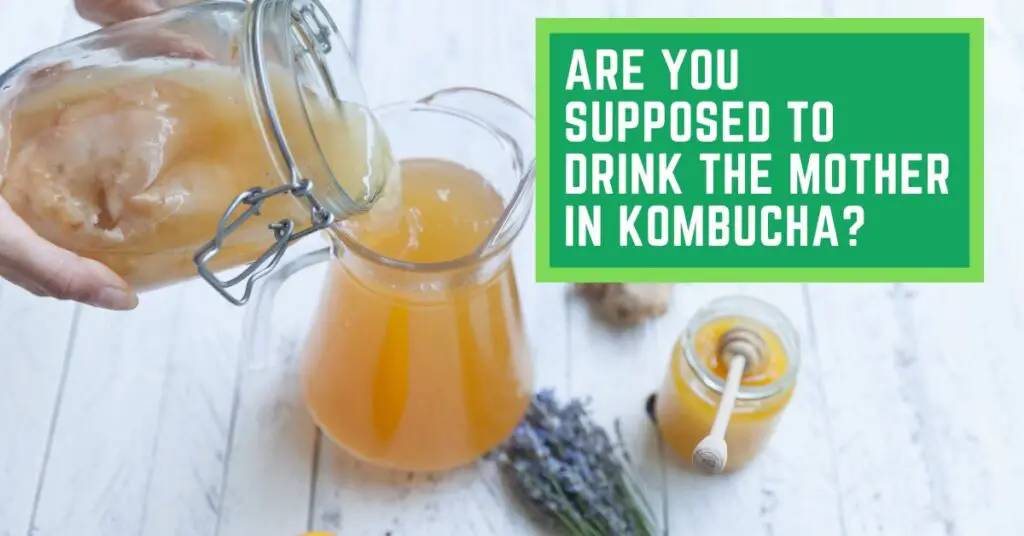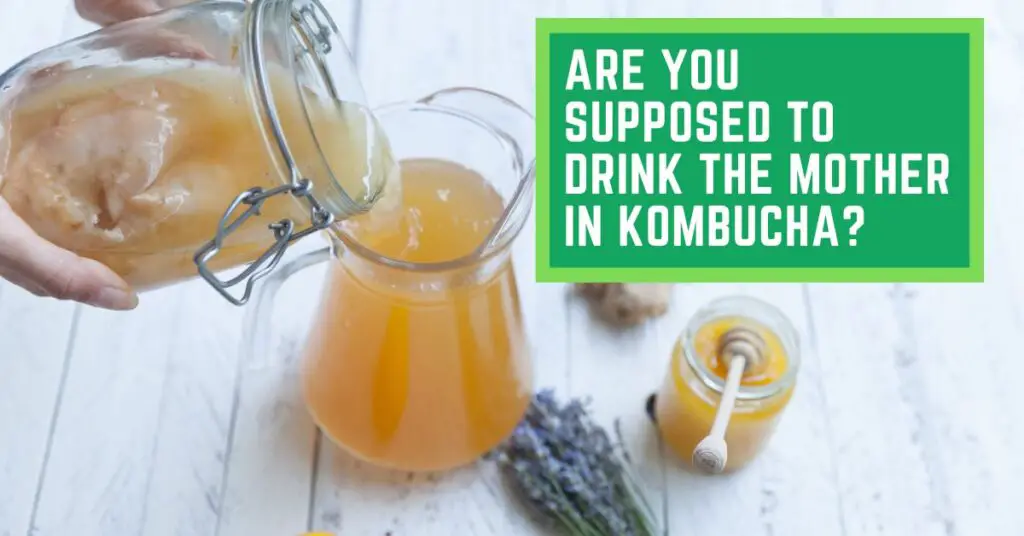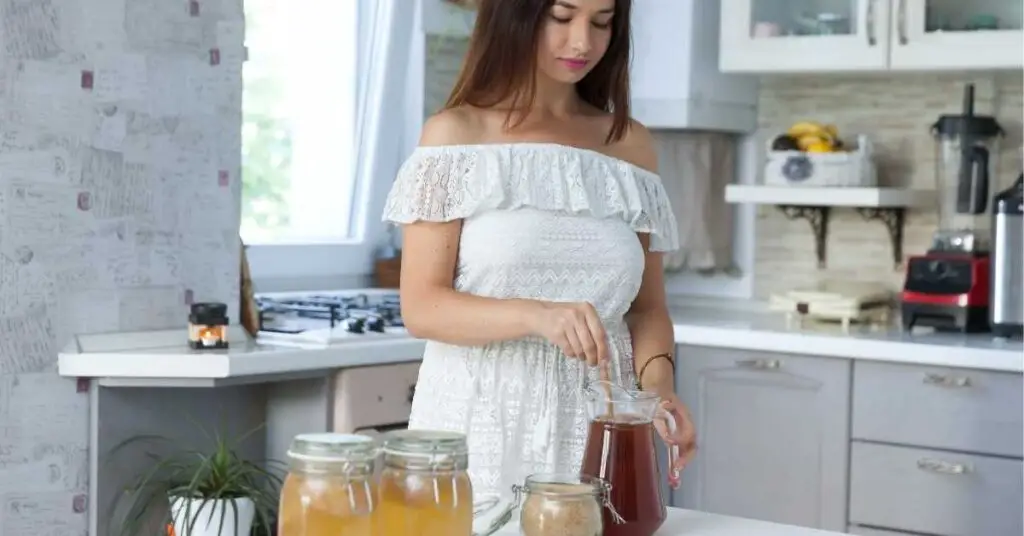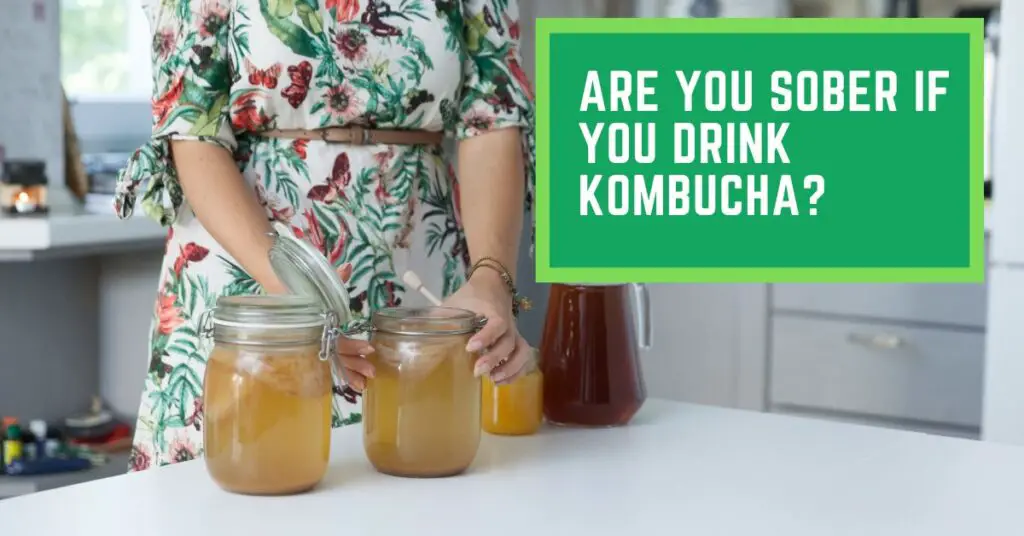Some people say that the mother is what makes kombucha so healthy, as it contains beneficial enzymes and acids that can promote gut health.
It’s true that you are supposed to drink the mother in kombucha. The mother is a symbiotic colony of bacteria and yeast (SCOBY) that ferments the tea and gives kombucha its probiotic benefits.
In this article, we’ll discuss the mother in kombucha and why you should be drinking it.
What is Kombucha Mother?
Kombucha is a type of fermented tea that has been around for centuries. The fermentation process creates beneficial bacteria and yeast that are good for your gut health.
The kombucha mother is a key ingredient in making kombucha. It is a SCOBY (symbiotic colony of bacteria and yeast) that ferments the tea and creates the probiotics.
The kombucha mother is a living organism that continues to grow and multiply with each batch of kombucha. It is a gelatinous mass that looks like a mushroom or a small pancake. The kombucha mother can be used over and over again to make kombucha.
The Importance And Benefits of Kombucha Mother
A kombucha mother is a symbiotic colony of bacteria and yeast (SCOBY), which is used to brew kombucha, a lightly fermented tea.
The SCOBY culture is also known as a “mother” because it can be used to start new batches of kombucha. Although kombucha has been around for centuries, it has only recently gained popularity in the Western world.
There are many benefits of drinking kombucha, including boosting your immune system, aiding in digestion, and helping to detoxify your body. Kombucha is also a good source of probiotics, which are beneficial bacteria that help keep your gut healthy.
If you’re thinking about trying kombucha, it’s important to know that the mother is a key ingredient in the brewing process.
Should You Drink The Mother in Kombucha?
Yes! The kombucha mother is rich in probiotics, enzymes, and acids that are great for your health. Drinking kombucha with its mother is the best way to get all of the health benefits that kombucha has to offer.
What do You do With Kombucha Mother?
Some people drink kombucha for its health benefits, while others simply enjoy its unique flavor.
So, what do you do with kombucha tea? Well, there are a few different options.
You can also use the kombucha mother to start a new batch of kombucha. To do this, simply remove the mother from the current batch of kombucha (using a clean spoon or spatula), and add it to a new batch of sweetened tea.
Also, you can also use kombucha mother to make a vinegar. This is done by allowing the kombucha mother to ferment in an airtight container for several weeks or months. The result is a tart, slightly effervescent vinegar that can be used in a variety of ways.
The Flavor And Aroma of Kombucha Mother
The SCOBY breaks down the sugar in the tea, and during this fermentation process, creates kombucha’s distinct flavor and aroma.
Kombucha’s flavor is often described as tart, slightly sweet, and vinegary. The longer kombucha ferments, the more sour it becomes.
Kombucha’s aroma is also slightly sour and vinegary. Some people also detect hints of fruitiness, earthiness, or muskiness in the scent.
The flavor and aroma of kombucha vary depending on the type of tea used, the type of sugar used, the length of fermentation, and other factors. However, all kombuchas share a common tangy taste and smell.
If you’ve never tried kombucha before, be warned that its unique flavor can take some getting used to! But many people find that they quickly develop a taste for this refreshing, health-boosting beverage.
How to Make Kombucha Mother?
You can buy a kombucha mother online or from a health food store. You can also get one from a friend who makes kombucha.
To make your own kombucha mother, you’ll need to start with sweetened black or green tea and allow it to ferment for several weeks.
Once you have your kombucha mother, you can make kombucha by adding it to sweetened tea and allowing it to ferment for 7-30 days.
The longer you ferment the kombucha, the more tart and vinegary it will become. When it’s ready, you can enjoy it plain or add fruit juice or herbs for flavor.
How to Store Kombucha Mother?
Once you have your kombucha mother, you’ll need to store it properly to keep it alive and healthy. Here are a few tips on how to store kombucha mother:
– Keep the mother in a jar or container with a tight-fitting lid.
– Fill the jar or container with sweetened tea (black, green, or white tea will work).
– Store the jar or container in a cool, dark place.
– Feed the mother with sweetened tea every week or so.
– When you’re ready to use the mother to make kombucha, remove it from the storage container and place it in a brewing vessel.
With proper care, your kombucha mother can last indefinitely. By following these storage tips, you can keep your kombucha mother healthy and happy for months to come.
Are There Any Side Effects of Kombucha Mother?
No, there are no known side effects of kombucha mother. This is because kombucha mother is simply a colony of bacteria and yeast.
These bacteria and yeast are actually beneficial for your health, as they help to improve digestion and gut health. Therefore, you can drink kombucha without worrying about any adverse effects.
In fact, many people find that kombucha has a range of health benefits, including improved energy levels and increased immunity. However, if you do have any concerns, it is always best to speak to your doctor before consuming kombucha.
Kombucha Mother: Avoiding Contamination And Ensuring a Healthy Brew
As you know, kombucha has many health benefits, including improving digestion, boosting immunity, and aiding in weight loss. However, it can also be contaminated with harmful bacteria if not made properly.
To avoid contamination and ensure a healthy brew, follow these tips:
– Use filtered water to make your kombucha. This will remove any impurities that could contaminate your batch.
– Sterilize all of your brewing equipment before using it. This will kill any bacteria that could contaminate your kombucha.
– Only use organic, unrefined sugar in your kombucha. Refined sugar has been processed and stripped of its nutrients, which can weaken the SCOBY and make it more susceptible to contamination.
– Make sure your SCOBY is healthy before brewing. A healthy SCOBY will have a white, opaque appearance and should be at least ½ inch thick. If your SCOBY is thin or translucent, it may be weak and more susceptible to contamination.
– Brew your kombucha in a clean, dry environment. Avoid areas where there is dust or mold, as these could contaminate your batch.
– Store your kombucha in a clean, airtight container. This will prevent contaminants from getting into your kombucha and spoiling it.
By following these tips, you can avoid contamination and ensure a healthy brew. Enjoy your kombucha safely!
Frequently Asked questions Related to Kombucha Mother
1. Do you throw away old kombucha mother?
No, you don’t have to throw away your old kombucha mother. In fact, you can use it to make a new batch of kombucha!
Just add it to some sweetened black tea and let it ferment for a few days. Your kombucha will be just as delicious as before.
2. Do you drink the floating stuff in kombucha?
The floating stuff is called a “scoby,” and it’s a culture of bacteria and yeast that forms during the fermentation process.
It’s perfectly safe to drink, and some people even like the flavor. However, if you’re not used to it, it can be a bit sour or bitter.
3. When should I separate my kombucha mother?
You can separate your kombucha mother once it gets too big for its current vessel or if you want to start a new batch of kombucha.
To do this, simply remove the mother from the vessel, then rinse it off and place it in a new jar with fresh tea.
Theoretically, you can keep separating and using your kombucha mother indefinitely! However, some people like to start with a fresh mother every few years.













